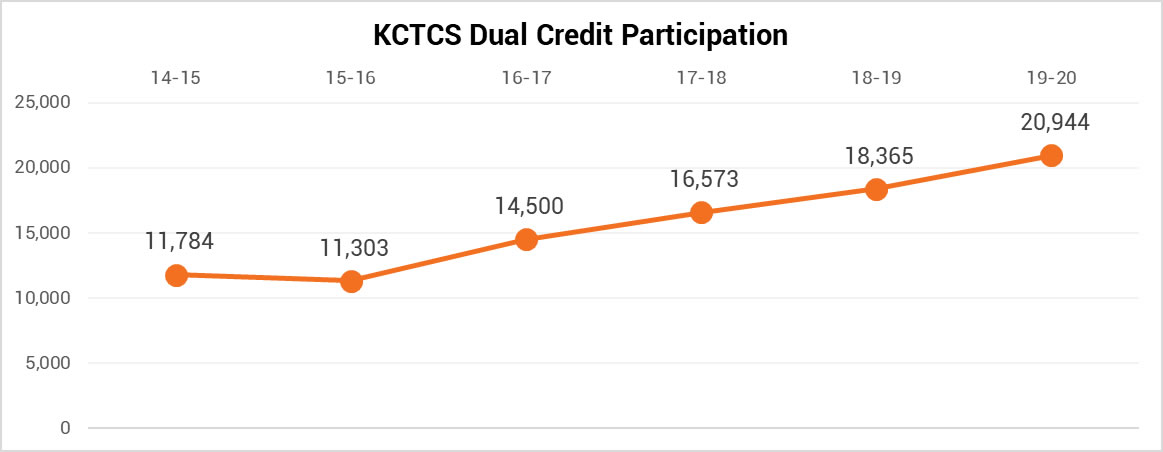Dual credit programs at KCTCS improve grades and completion rates
August 03, 2021

Students who took dual credit courses before enrolling at the Kentucky Community and Technical College System (KCTCS) were more likely to score higher grades and earn a college credential, according to a new study released today.
The Kentucky Council on Postsecondary Education (CPE) issued the report on dual credit and student success after analyzing outcomes for more than 30,000 students who enrolled at KCTCS in the fall terms from 2014-2017. Overall, the study shows that dual credit experiences provide important advantages for students heading to college, but outcomes vary based on race, gender and income.

Researchers looked at two sets of students: those on a technical track, pursuing certificates or applied associate degrees, and those on an academic track, pursuing associate degrees or planning to transfer to a four-year program.
Dual credit helps students build confidence, prepare for college and often lower the cost of a degree. - CPE President Aaron Thompson
For students on a technical track, researchers found that taking a dual credit course increased the probability of earning at least a 3.0 GPA during the first year of college by 4.4 percentage points. It also raised the likelihood of completing a college credential by 9.2 percentage points.
For students on an academic track, dual credit participants were 3.9 percentage points more likely to earn at least a 3.0 GPA and 11.3 percentage points more likely to earn a credential or transfer to a public university within three years.
CPE President Aaron Thompson said the findings demonstrate the power of dual credit programs in raising educational attainment. However, he added, educators must do more to ensure that all students share in the benefits.
“The advantages are well established at this point,” Thompson said. “Dual credit helps students build confidence, prepare for college and often lower the cost of a degree. Now our work must focus on expanding these opportunities and closing the outcome gaps so that all students have the same chance to succeed.”
While dual credit participation at KCTCS showed some overall advantages, researchers found disparities based on race, gender and income.
For instance, white and Asian students appeared to benefit the most. Low-income and underrepresented minority students saw some increase in the likelihood of completing a credential, but dual credit did not confer any significant effects on their first-year GPA.
Researchers said those findings show the need for more rigorous dual credit experiences for low-income and minority students – with greater academic supports.
“Our goal with this study is to provide policy leaders with clear, empirical evidence to strengthen our dual credit programs statewide,” said Dr. Jie “Grace” Dai, CPE’s senior associate for data and advanced analytics. “We hope this will serve as a springboard to increase participation overall, but also improve the value of dual credit courses for marginalized students groups.”
You might be interested in our dual credit research:
- Dual Credit & Student Success: The Effect of High School Dual Credit on Educational Outcomes at Kentucky Public Universities
- CPE's Interactive Dual Credit Dashboard
Dual credit programs enable high school students to enroll in college courses and receive simultaneous academic or technical credit that counts toward both high school and college completion. The majority of dual credit courses in Kentucky are offered through KCTCS.
This report is the second major study that CPE has released on dual credit over the past year. The first, released in September, showed that the number of Kentucky high school students enrolling in dual credit courses has soared more than 75% in recent years, helping to improve grades and shore up college persistence, particularly among low-income students.
The report can be accessed on the Council's website at http://cpe.ky.gov/data/reports/kctcsdualcreditreport.pdf.
Last Updated: 8/5/2021
